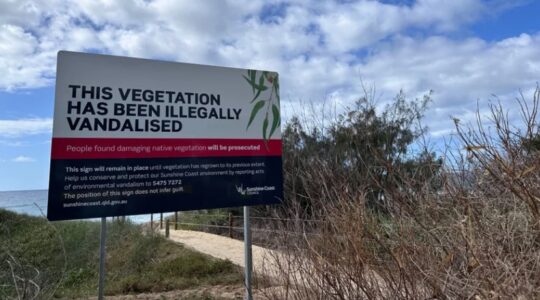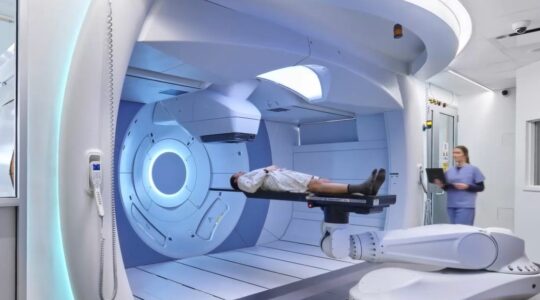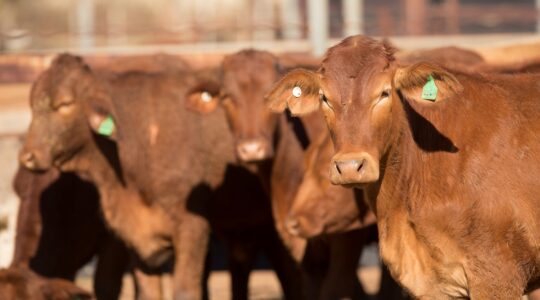By Steve Zeppa
It’s Queensland Budget time and at Newsreel we know Queenslanders are a smart bunch, so we won’t be telling you who are the “winners” or “losers” or which announcement deserves a tick or a cross. You can decide.
Here are the numbers.
The headlines
- $90.738 billion total budget.
- $564 million surplus.
- Overall economic growth forecast to strengthen to 3 percent in both 2023–24 and 2024–25, supported by ongoing population growth, but driven by a substantial rebound in goods exports.
- Government to use borrowings to deliver services and enabling infrastructure, increasing the General Government Sector net debt to $27.407 billion in 2024-25. This will rise to $59.831 billion in 2027-28.
- Total Non-Financial Public Sector borrowings, including that of government-owned corporations will rise from $108.569 billion in 2023-24 to $171.987 billion in 2027-28 to pay for infrastructure.
The commitments
Cost-of-living:
- $2.965 billion package to fund electricity bill relief.
- All Queensland households will receive $1300 off their electricity bills in 2024–25 ($300 funded from Federal Government).
- Vulnerable households will continue to receive the $372 Queensland Electricity Rebate, for a total of $1672 support in 2024–25.
- Around 205,000 eligible Queensland small businesses will receive a $650 credit on electricity bills in 2024–25, co-funded by the Queensland and Australian governments.
- $66.7 million to continue the current freeze of registration fee and traffic improvement fee components of motor vehicle registration costs.
- $435 million to fund 20 percent reduction in the registration fee and traffic improvement fee components of motor vehicle registration for all light vehicles, including motorcycles and trailers, for 12 months.
- $150 million to fund a flat fare of 50 cents per trip on the state’s public transport network for six months from August 5.
- $62.3 million over five years to freeze on public transport fare increases.
- Extra 33.5 million to increase the maximum value of the FairPlay voucher from $150 to $200 and increase the number of vouchers available from 50,000 to up to 200,000.
- $15 million for the School and Community Food Relief Program to assist children to access food relief from appropriate sources, ranging from subsidised lunches, breakfasts or tuckshop items.
- An additional $3.3 million over two years from 2024–25 for OzHarvest and SecondBite to provide food relief across Queensland.
- $2.9 million over four years for Foodbank Queensland to allow increased warehousing space in Brisbane, as well as supporting increased food storage and supply through the establishment of a distribution point in north Queensland.
- An additional $1.7 million in 2024–25 for the continuation of increased provision of Emergency Relief in communities across Queensland, including through an additional 92 Neighbourhood Centres and into discrete First Nations communities.
- A doubling of funding to Queensland Meals on Wheels, with the government committing $1.2 million over four years to extend and increase funding to $300,000 per annum ongoing to enable greater support, guidance and coordination to be provided across the Queensland Meals on Wheels network.
- An additional $1.1 million in 2024–25 for the continuation of the Queensland Financial Resilience Program to deliver vital support to people experiencing financial hardship to improve their capacity to manage their personal finances.
Infrastructure
- A 4-year capital program of $107.262 billion.
- $16.5 billion for renewable energy and storage projects.
- $8.5 billion for transmission infrastructure, including CopperString 2032, SuperGrid and Renewable Energy Zone transmission works .
- $500 million for distribution network storage, including Energy Queensland’s Local Network Battery Plan and Local Renewable Energy Zone Pilot Projects.
- $192 million for Powerlink to develop Transmission and Training Hubs in Townsville and Gladstone.
- $5.5 billion (split 50:50 with Federal Government) for new 37.8 kilometre Direct Sunshine Coast Rail Line between Beerwah and Maroochydore.
- $3.026 billion (jointly funded with Federal Government) for construction of the Coomera Connector (Stage 1).
- $1.730 billion to construct the Rockhampton Ring Road.
- $1.162 billion to construct Cooroy to Curra (Section D).
- $948 million for the upgrade between the Gateway Motorway and Dohles Rocks Road (Stage 1).
- $336 million towards a bypass of Tiaro to increase the flood immunity, safety and efficiency of the Bruce Highway..
- $1.219b (jointly funding with the Australian Government and Gold Coast City Council) for construction of Stage 3 of the Gold Coast Light Rail, from Broadbeach South to Burleigh Heads, to connect to the existing Gold Coast Light Rail.
- $5.75 billion (split 50:50 with the Australian Government) for the Logan and Gold Coast Faster Rail (Kuraby to Beenleigh) upgrade, with a plan to increase the number of tracks between Kuraby and Beenleigh from 2 to 4 tracks, with modernised rail systems, station upgrades and level crossing removals along this 20km corridor.
- $100 million over three years from the Disaster Recovery Funding Arrangements Efficiencies, jointly funded by the Queensland and Australian Governments, to support a suite of high priority disaster resilience and mitigation infrastructure and non-infrastructure programs and projects.
Community safety
- 900 additional police personnel to join the over 18,000-strong police presence in Queensland
- Additional equipment for police such as 3000 wands and 1000 state-of-the-art tasers for detection and response
- Response helicopters to service Far North Queensland and Wide Bay/ Sunshine Coast, and increased drone capability in priority regions across Queensland.
- $48 million to upgrade police stations in Bundaberg and Hervey Bay.
- $261.4 million to deliver a therapeutic operational model at the Woodford Youth Detention Centre, to ensure young people detained can access rehabilitation programs.
- $149.2 million for the Wacol Youth Remand Centre, scheduled to be commissioned in late 2024.
- $13.6 million to expand the Youth Co-Responder teams in Cairns, the Gold Coast and South Brisbane and additional teams in Sunshine Coast and South West.
- $52.3 million to provide more resources and support for the victims of crime, their families and communities through key initiatives such as:
- $16 million to continue and expand the Victims of Crime Community Response Program that provides immediate round-the-clock support to victims of crime.
- $15.6 million to increase the capacity of Victims Assist Queensland to process financial assistance applications
- $2.8 million to enhance the Victim Liaison Service that connects victims and their families with the prosecution while their case is proceeding through court.
- $6 million to non-government organisations to provide after-hours support for young people.
- $15 million for a new Police-Citizens Youth Club (PCYC) in Caloundra and $2 million to upgrade PCYC Redcliffe.
- $5 million in a new Local Government Community Safety Fund for communities in priority areas across Queensland to install CCTV systems and other community safety measures
- Almost $40 million to extend the Helping Seniors Secure their Homes trial until the end of 2024, which supports eligible seniors to install security related measures in their homes
- $3.2 million to boost support for community groups such as the Neighbourhood Watch, Queensland Homicide Victims’ Group, Crime Stoppers and Stop the Coward Punch.
- $1.1 billion budget for new Queensland Fire Department.
- $27 million to create the new Marine Rescue Queensland with 35 support staff.
- $12 million capital boost to Surf Life Saving Queensland as part of a $125 million 10-year funding agreement.
Health and Community
- Queensland Health’s operating budget will be $4.393 billion over the next 4 years.
- Current Budget provides an overall investment of $1.14 billion in 2024–25.
- Additional $158.4 million over four years in new funding and $215.9 million from internal Queensland Health resources to support and retaining the current workforce.
- $64 million over four years to implement a new electronic workforce rostering system to enable best practice in rostering frontline staff.
- Uplift to the Queensland Ambulance Service funding to $265.9 million over 4 years to recruit 188 ambulance operatives and 80 specialised positions.
- $30 million boost to the Queensland Ambulance Service’s base capital program.
- $190.8 million over four years to enable more foster carers to receive financial support.
Housing
- Eligibility for the first home concession will be extended to homes with a dutiable value up to $800,000 (up from $550,000 currently), and first home vacant land concession eligibility will be extended to vacant land with a dutiable value up to $500,000 (up from $400,000 currently)
- $350 million fund to incentivise infill development to support delivery of new housing in the right locations.
- $12.5 million of targeted, needs-based funding for local governments to facilitate strategic planning and updating of their planning schemes.
- $160 million Renters Relief Package to give more households immediate cost-of-living support while new homes are being built, including help to pay bonds and rent.
Brisbane 2032 Olympic and Paralympic Games
- Additional $62 million over four years from 2024–25 and $14 million per annum ongoing to 2032–33 for the preparation of additional Project Validation Reports and establishment costs for the Games Venue and Legacy Delivery Authority, to be transferred to the Authority once established.
- $7.1 billion over nine years for capital expenditure for Brisbane 2032 venues infrastructure, including the Brisbane Arena ($2.5 billion), upgrades to the Queensland State Athletics Centre and refurbishment of the Gabba Stadium and Suncorp Stadium ($2.7 billion), and 15 new or upgraded venues under the Minor Venues Program ($1.9 billion). • Total forecast expenditure for the venues’ infrastructure program over 4 years to 2027–28 is $3.247 billion.








